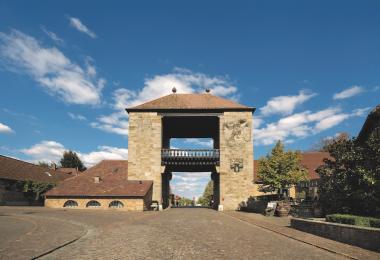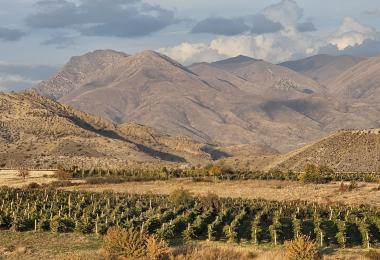Zweigelt, also known as Blauer Zweigelt or Rotburger, is a crossing of the grape varieties Blaufränkisch and St. Laurent created by Dr. Fritz Zweigelt in 1922 at the Federal Teaching and Research Centre for Viticulture and Horticulture in Klosterneuburg (LFZ Klosterneuburg).

Zweigelt brings violet-ruby coloured wines with soft tannins and exuberant aromas and flavours of Morello cherry, raspberry, and blackberry. Wine styles range from fruity, youthful, easy-drinking red and rosé wines fermented in stainless-steel to powerful, firm versions made in wood. When yields are kept low and the wine is matured in small oak barrels, complex, full-bodied wines with good aging potential are produced. The variety is also often used as a partner in flagship blends. Attractively opulent Zweigelt wines are often produced in Carnuntum and in the regions surrounding Lake Neusiedl.

A Culinary Talent
One of the reasons for Zweigelt’s tremendous popularity among consumers is its food-pairing versatility. Mediterranean dishes like Saltimbocca, Ossobuco or mushroom risotto adore the mild, round texture of the variety. Whether Korean Kimchi or Italian Penne all’Arrabbiata, Zweigelt also works beautifully with chilis, pepper, and fiery flavours due to its deep fruit and modest tannins. Chilled to around 14 °C, lighter fruity versions are great crowd pleasers at barbecue or pizza parties. Austria’s leading red wine variety is also a great match with matured semi-hard and hard cheese.
Of all the new grape vine breeds created at LFZ Klosterneuburg, Zweigelt is the most successful. It is planted on over 6,200 hectares and makes up nearly 14 % of Austria’s vineyard area. Zweigelt thrives in favourable sites in all of the country’s wine regions. The variety demands little from the soil and offers some frost resistance but, because it is a very vigorous grape, it requires diligent canopy management and yield regulation.

Controversial Name
The influential vintner Lenz Moser recognized the potential of the St. Laurent x Blaufränkisch variety and its suitability for his high vine-training system in the 1950s. Moser considered the designation “St. Laurent x Blaufränkisch” too long and decided to name the grape after its breeder. By 1958, the naming process had reached a stage at which it could no longer be stopped. The problem of naming the variety after a man who was an active National Socialist was addressed publicly in 2018. The Austrian Wine Marketing website offers a translated article from the book “Wein in Österreich: die Geschichte” that sheds light on the person Fritz Zweigelt here.








